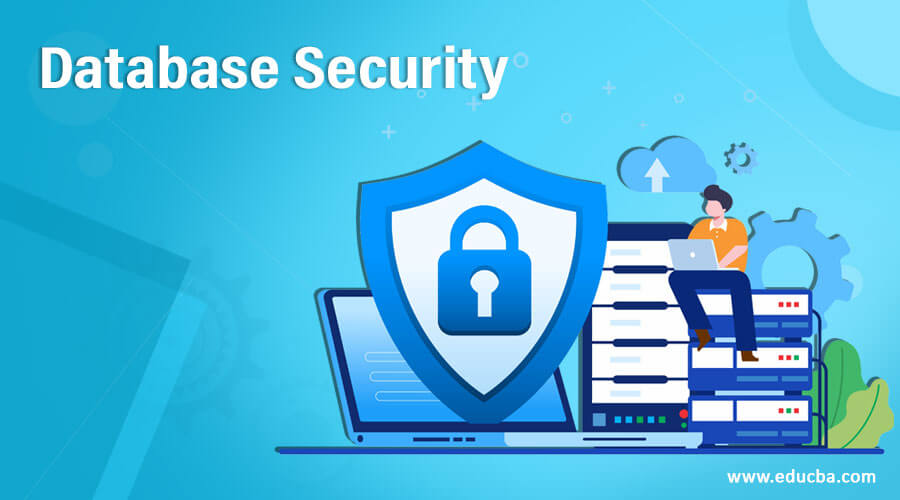Introduction to Database Security
Database security can be defined as the concept of adding protection against the databases, which embraces Data handled by various elements inside a system. The main purpose of adding this feature to a system, with a higher perspective for accessing the linked databases and database management systems, is the need for keeping up confidentiality, data quality, and maintenance of data integrity. This security measure is typically implemented on larger databases to mitigate the risk of data leakage and potential vulnerability to hacking attempts.
Top Benefits of Database Security
Database security is an essential part of an organization with multiple inter-related databases and database management systems, which work alongside the functional elements of the organization’s applications. The security precautions installed for a database system can help prevent many possibly serious consequences of breach.
Below are some of the beneficial characteristics of executing a security element for a database,
- Databases can be safeguarded from security breaches and Hacking activities like firewall intrusion, virus spread, and ransomware. This helps protect the company’s susceptible information, which cannot be shared with outsiders at any cause.
- Stop attacks like malware, contagious files, and other possible infections for unsecure database systems.
- Guaranteed protection for the server systems from any substantial harm that might result in the failure of data processing or retrieval.
- This feature comes with a commitment to the database users and the management professionals from the business area to keep the perceptive data accumulated precisely for utilizing the information aptly.
- Though adding the security attributes to the existing database is going to cost the business, it helps in making sure the expenses are going to be an Investment rather than a loss.
Database Security Controls
It has various control capabilities to keep the database from exposing confidential information by following the security protocols.
- Solidification and Constant Supervision: The fundamental structural design offers a supplementary way into Database Management Systems or Databases. The steady and stable update on the system aids in keeping the database systems reliable to work along the safety measures and arrangements as a part of security precautions.
- DBMS System Composition: A significant part of successfully operating a database system is the configuration settings for the database management system. The configuration should cover the admin activities and privileges, like the access handling activities. Hence, any mismanagement in the configuration settings can make a big dent in database protection. When setting up the system onto an application, these measures are inbuilt, and the configuration process is easy.
- Sturdiness: The methods comprise of multiple authentication features, namely the practice of confirming the other person accessing the system with the respective authorization parameters like username and password.
- Admittance Criteria: A chief effect of employing characteristics is to make a valuable constraint for the systems or the personnel to get their hands on the information included in the database systems. Limitations set on access rights help in keeping the system organized and clean. And this aspect, when added to the database systems, can enhance the security quality of the database.
- Periodical Inspection: Supervising the database constantly at regular intervals, with scheduled frequency, plays a major role in providing better security for the database system. It facilitates identifying misbehaviors, preventing possible malfunctions, lessening the general crash of the database management, and keeping the whole system clean to a certain extent.
- Imaging and making copies for Backups: Imaging and making multiple copies of the same system can prevent contaminating a fully functional database. These backups can help in holding the security protocols in place. This type of data recovery process falls under the database security feature. It also helps in regaining lost data, cleaning out contaminated data, avoiding hacking, etc.
- Encryption: This process comes with a set of responsibilities like handling the encryption keys, securing the encryption unit, overseeing the backup sources, maintaining the admission control rules, etc.
- Application security: To shield common hackers and system attacks that intend to make the most of the information, it is necessary to construct, install, and maintain strong security measures for database and application security. Hence it can also cover application security to the database level.
Database Security Tools
The following are some of the commonly used DS Tools,
- MSSQLMask
- IBM Guardium
- Scuba
- Hexatier
- Always Encrypted
- AppDetectivePro
- Nmap
- Gemalto SafeNet ProtectDB
- Zenmap
- BSQL Hacker
- Imperva SecureSphere
- SQLRecon
- Oracle Audit Vault
- Mentis Suite
- OScanner
- DB Defence
Conclusion
This is a crucial constituent in creating and maintaining database systems that are accessed by multiple systems in a bigger application surface. It protects the databases from a few potential threats like loss of data, wrongful access privileges, phishing, cyberattacks like malware & ransomware, configuration issues, etc.
Recommended Articles
This is a guide to Database Security. Here we discuss an introduction to Database Security’s top benefits with security control and tools. You can also go through our other related articles to learn more –

